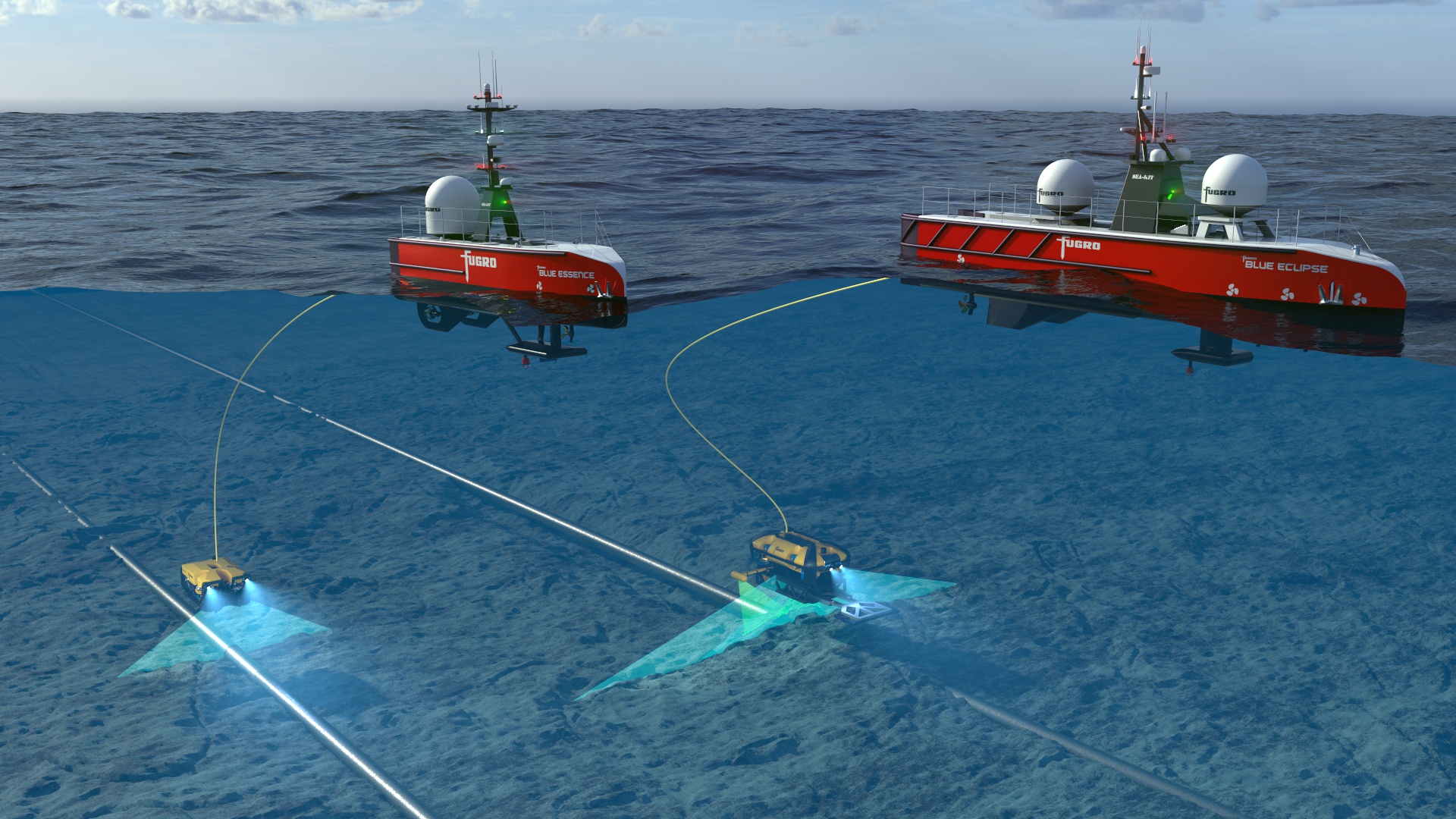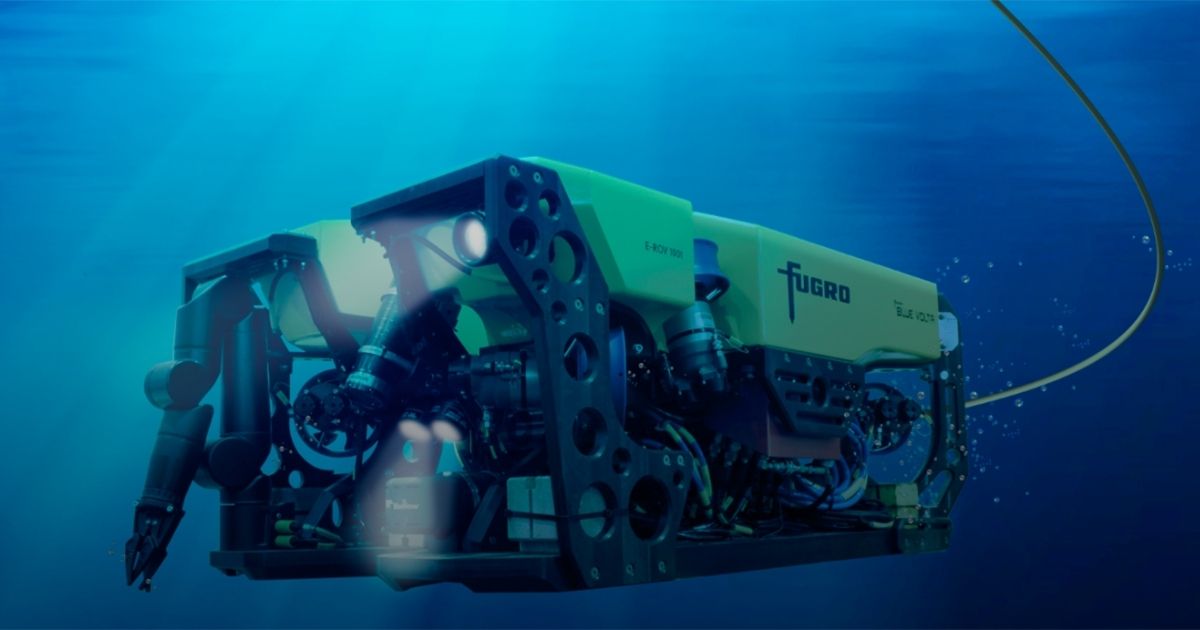By Mark Bruce, Product Owner for Next Generation ROV Systems
Why use a 90 m vessel for multiple surveys on a subsea pipeline when you can get the job done in a single pass, using a small electric powered remotely operated vehicle (eROV) launched from an uncrewed surface vessel (USV)? Depth of burial (DOB) inspections and surveys on pipelines are about to become faster, safer and more cost effective.
Clients require accurate positioning and DOB data for their subsea pipelines, as well as accurate multibeam data for the seafloor topology.
The rental market for subsea pipe trackers is quite bare. The TSS660 pipe tracker is currently one of the two main purchasing options available on the market and is designed ideally for use on a larger ROV.
We decided to trial the TSS660 on our observation class size Blue Volta eROV – the world’s first ROV to be developed specifically for deployment from a USV. In winter 2021, in the Dutch sector of the North Sea, we deployed the Blue Volta from our 12 m USV, Blue Essence. This proved to be a fast, safe and cost-effective solution.
Promising results
The eROV and USV pilots found that when the USV went faster, maintaining the heading became easier. But when the vessel went too fast, this impacted on data quality. The pilots of both systems quickly learned how to work together to achieve the optimum speed and position, to gather accurate and high-quality pipeline data.
The data was collected around the clock; our onshore remote operations centre (ROC) in Holland covered the day shift and our ROC in Aberdeen covered the night shift. Despite the harsh winter weather conditions, we completed multiple pipelines DOB data. This ability to gather high-quality data on a 24/7 basis is a huge benefit for any offshore project working to tight project timescales.
The USV gathered data at up to 1500 m an hour, which is comparable to the speed achieved by standard crewed inspection vessels, which typically have around 90 people onboard. The potential cost savings and reduced carbon footprint for clients are huge. For example, even efficient conventional survey vessels use approximately 7,000 liters of fuel a day, compared to our USV and eROV solutions significantly lowering its carbon footprint, by consuming 200 liters per day. All completed with no offshore personnel involved, the safety risks are dramatically reduced.
 Pipeline inspection carried out by USVs and eROVs. Credit: Fugro
Pipeline inspection carried out by USVs and eROVs. Credit: Fugro
Challenges
- We had to remove 10 kg from the eROV to offset the weight of the electronics pod of the TSS660 to stay neutrally weighted.
- Attached to the front of the eROV, the pipe tracker nearly doubled the length of its footprint and made it hydrodynamically challenging. This limits the control over the front half, which can result in a ‘nodding’ action.
- The goal is to be able to complete all scope of work within a single pass however this has its own challenges:
- Pipe trackers struggle to obtain feedback from their coils when a pipe is buried more than three meters under the seabed. To gather quality positioning data, the eROV must remain very close to the seabed at all times; Survey multibeam echosounders ideally would have the eROV two or three meters above the seabed, to create a wide swathe for data gathering, conflicting with the above requirement
- The latency of remote feeds required the eROV operator to think slightly ahead and remain ready to react quickly, to prevent the eROV from running into the seabed or bumping into an object. Future advanced autonomy on our eROV will help to resolve this.
![]() Fugro Blue Volta fitted with the TSS660 pipe tracker. Credit: Fugro
Fugro Blue Volta fitted with the TSS660 pipe tracker. Credit: Fugro
What’s next?
We are working to develop a small and slimline DOB solution on a ‘skid’ that has the same footprint as the eROV, to give us a more compact, hydrodynamic and stable solution during survey operations. This stability will aid improvement in data quality and efficiency.
We are also exploring new ways to follow the subsea pipeline autonomously. Fusing the feedback from the pipe tracker directly into our flight control system. This will eradicate latency and pilot errors.
The Holy Grail of DOB inspections with a small observation class vehicle is to obtain DOB data and a good swathe of quality positioning multibeam echosounder (MBES) data simultaneously. To this end, we will continue our search for the ultimate single-pass pipeline inspection operation that combines our USV and eROV equipped with multiple state-of-the-art sensors. Our innovation teams are busy driving their focus towards a faster, safer, cost-effective pipeline inspection solution.


